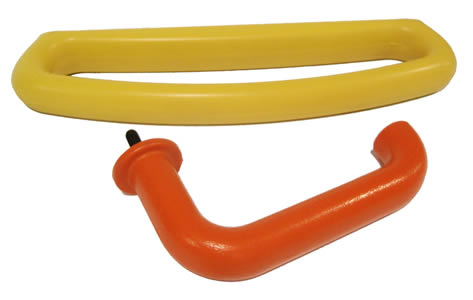Different Types of Foam Moulding Techniques
Unleashing the Potential of Foam Moulding
Foam moulding is a versatile and innovative manufacturing process used to create a wide range of products across various industries. This article delves into the intricacies of foam moulding, providing in-depth insights into the process, its applications, and the advantages it offers. Whether you are new to foam moulding or seeking to expand your knowledge, this guide has got you covered. So, let’s dive into the world of foam moulding and unleash its potential!

The process of foam moulding can be carried out through various techniques, each offering unique benefits. Here are some common types of foam moulding techniques:
1. Expandable Polystyrene (EPS) Moulding
EPS moulding involves expanding polystyrene beads inside a mould to create lightweight and insulating products.
2. Polyurethane (PU) Foam Moulding
PU foam moulding is known for its flexibility and is widely used in furniture, automotive, and packaging applications.
3. Structural Foam Moulding
Structural foam moulding is a technique that produces high-strength and rigid foam products, suitable for heavy-duty applications.
4. Injection Foam Moulding
Injection foam moulding involves injecting foam material directly Foam Moulding into the mould, providing excellent control over the product’s density and properties.
5. Steam Chest Moulding
Steam chest moulding utilizes steam to expand the foam material and form complex shapes with precision.
The Foam Moulding Process Step by Step
The foam moulding process involves several steps to achieve the desired results. Let’s take a closer look at each stage:
1. Pre-Expansion
During pre-expansion, the foam beads are expanded using steam to achieve the desired size and density.
2. Conditioning
The expanded beads are conditioned to stabilize their properties and ensure uniform expansion during moulding.
3. Mould Filling
The conditioned beads are transferred to the mould, and heat is applied to activate the blowing agent, causing the beads to expand and fill the mould.
4. Cooling and Demoulding
After filling the mould, the foam is cooled, allowing it to solidify and take the desired shape. The product is then demoulded and ready for further processing.
5. Trimming and Finishing
Excess foam is trimmed, and the product is finished with precision to meet specific requirements.
Foam Moulding: Techniques and Materials Explained
Foam moulding employs different techniques and materials to achieve various product specifications. Here’s a detailed explanation of the techniques and materials used:
1. Expanded Polystyrene (EPS)
EPS foam, derived from polystyrene beads, is known for its excellent insulation and shock-absorbing properties. It is commonly used in packaging and building materials.
2. Polyurethane (PU)
PU foam offers superior flexibility and comfort, making it an ideal choice for furniture and automotive applications.
3. High-Density Foam
High-density foam provides exceptional structural support and is preferred for heavy-duty applications.
4. Low-Density Foam
Low-density foam is lightweight and widely used for packaging and cushioning applications.
5. Memory Foam
Memory foam adapts to body heat, providing personalized comfort and support, commonly used in mattresses and pillows.
Foam Moulding Vs. Other Moulding Techniques
Foam moulding stands out from traditional moulding techniques due to its unique characteristics and advantages. Let’s compare foam moulding with other common moulding techniques:
Foam Moulding Vs. Injection Moulding
Foam moulding allows for greater design flexibility and reduced material usage compared to injection moulding, making it more cost-effective for certain applications.
Foam Moulding Vs. Blow Moulding
While blow moulding is suitable for hollow products, foam moulding excels in producing solid and lightweight products with better insulation properties.